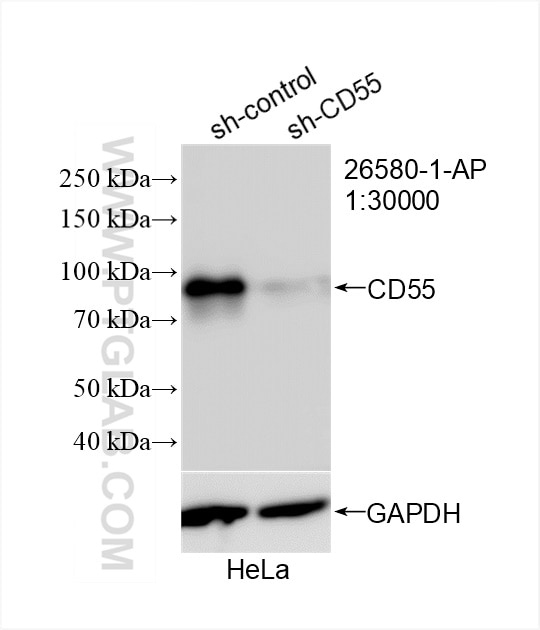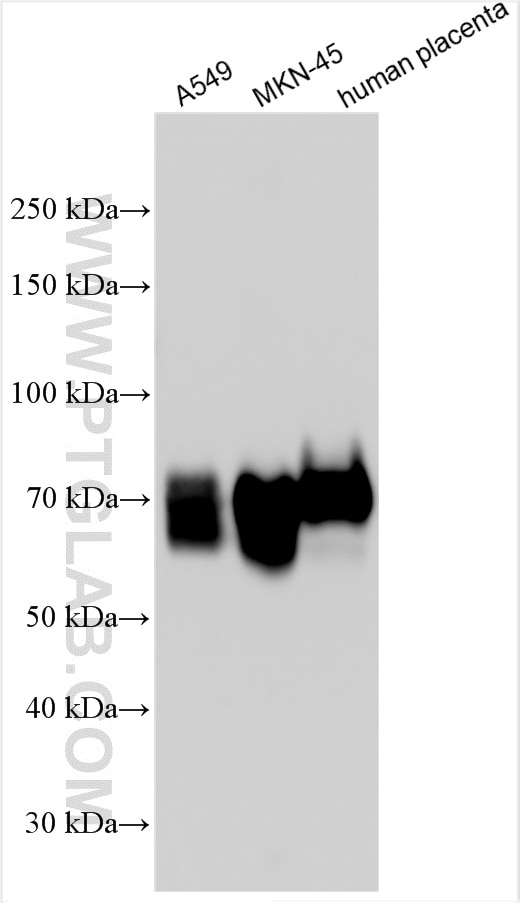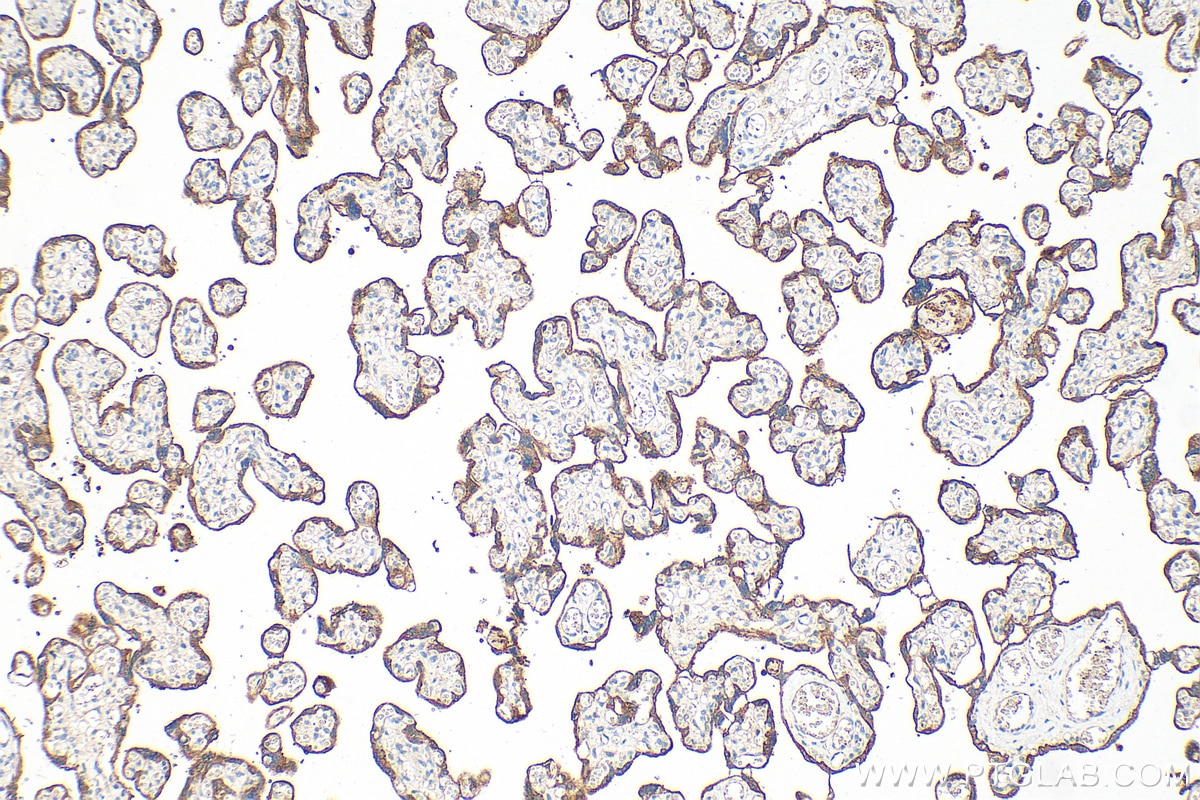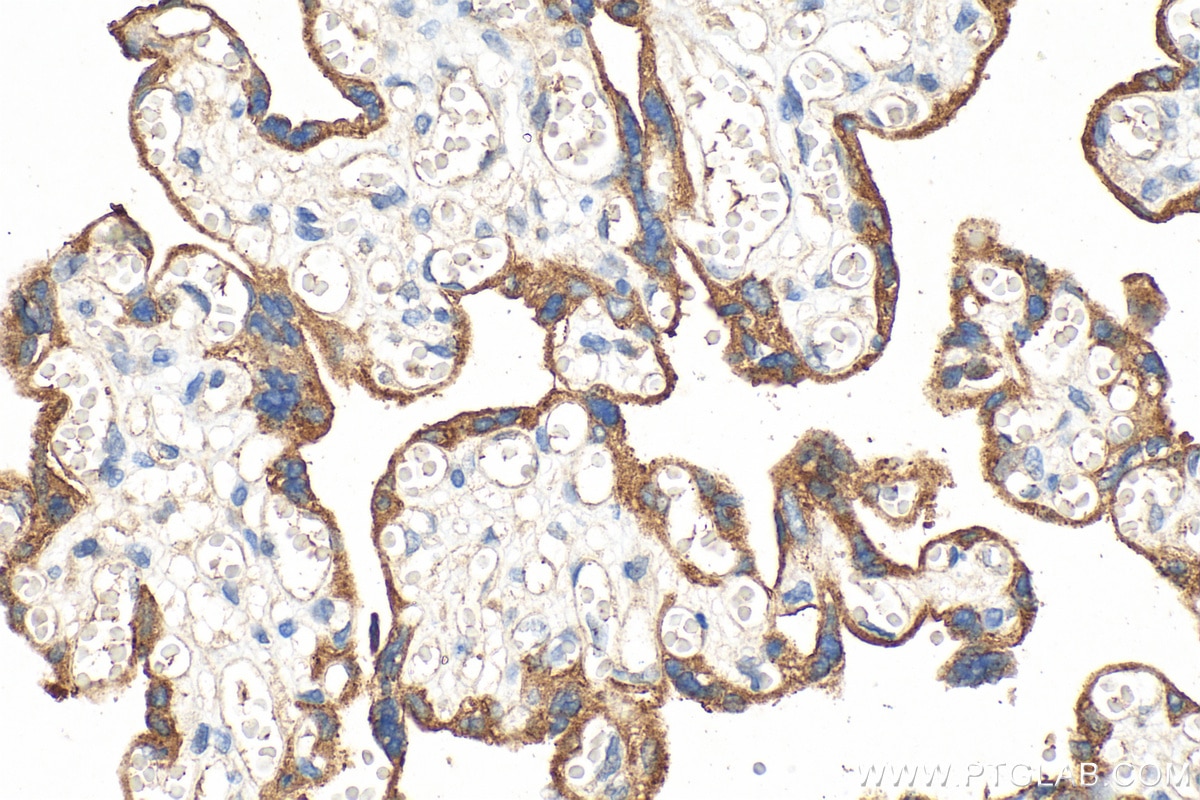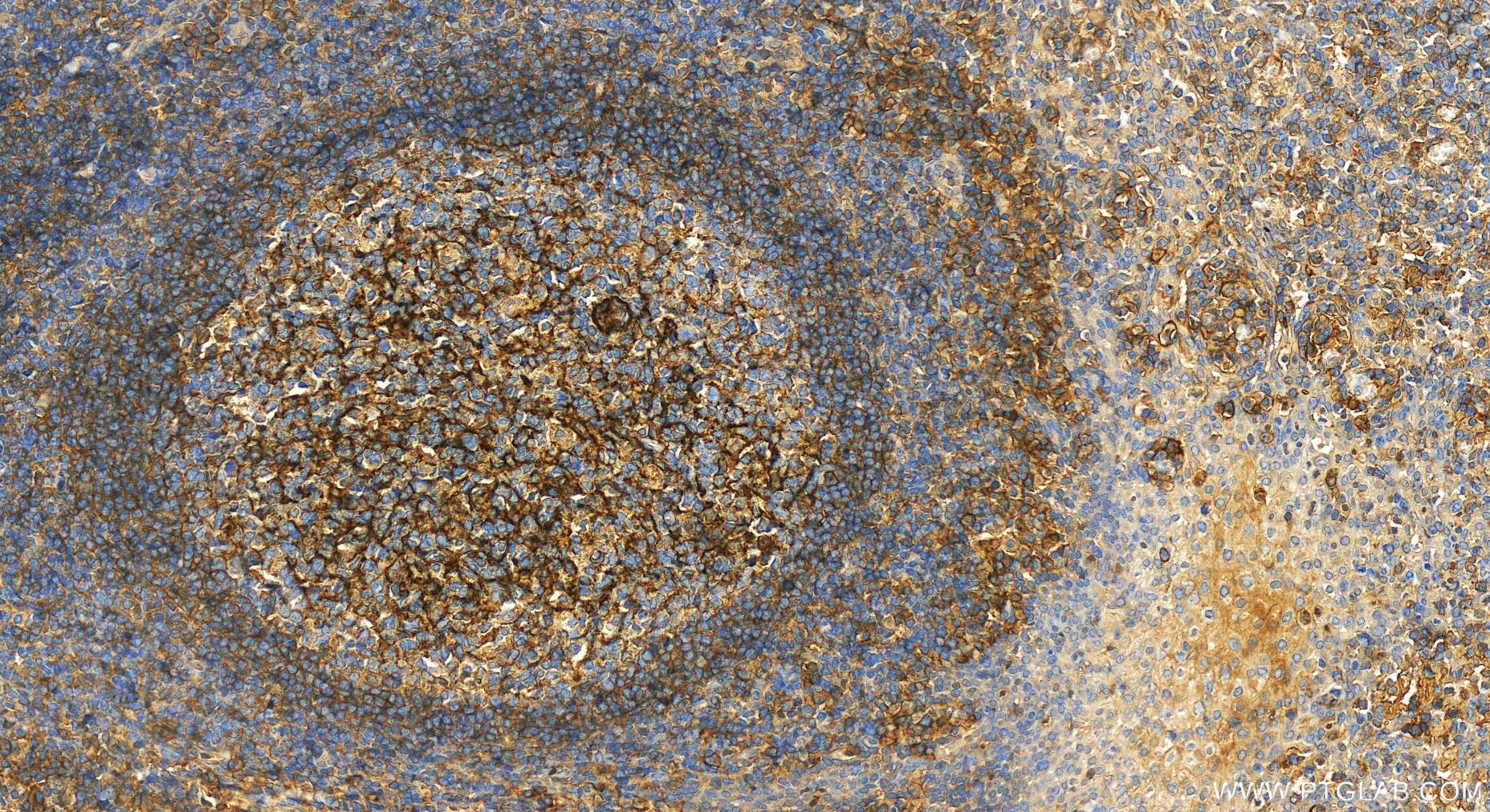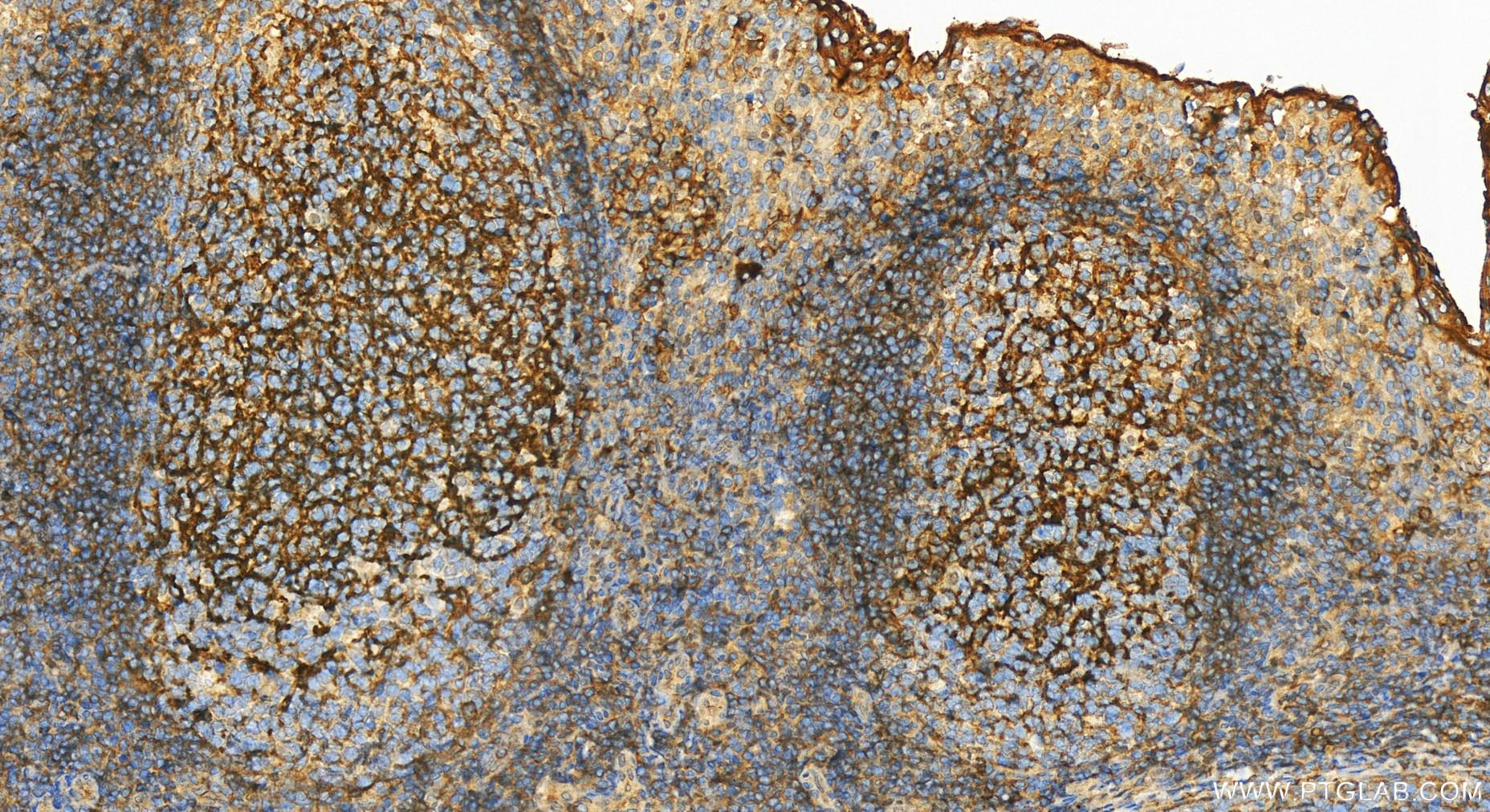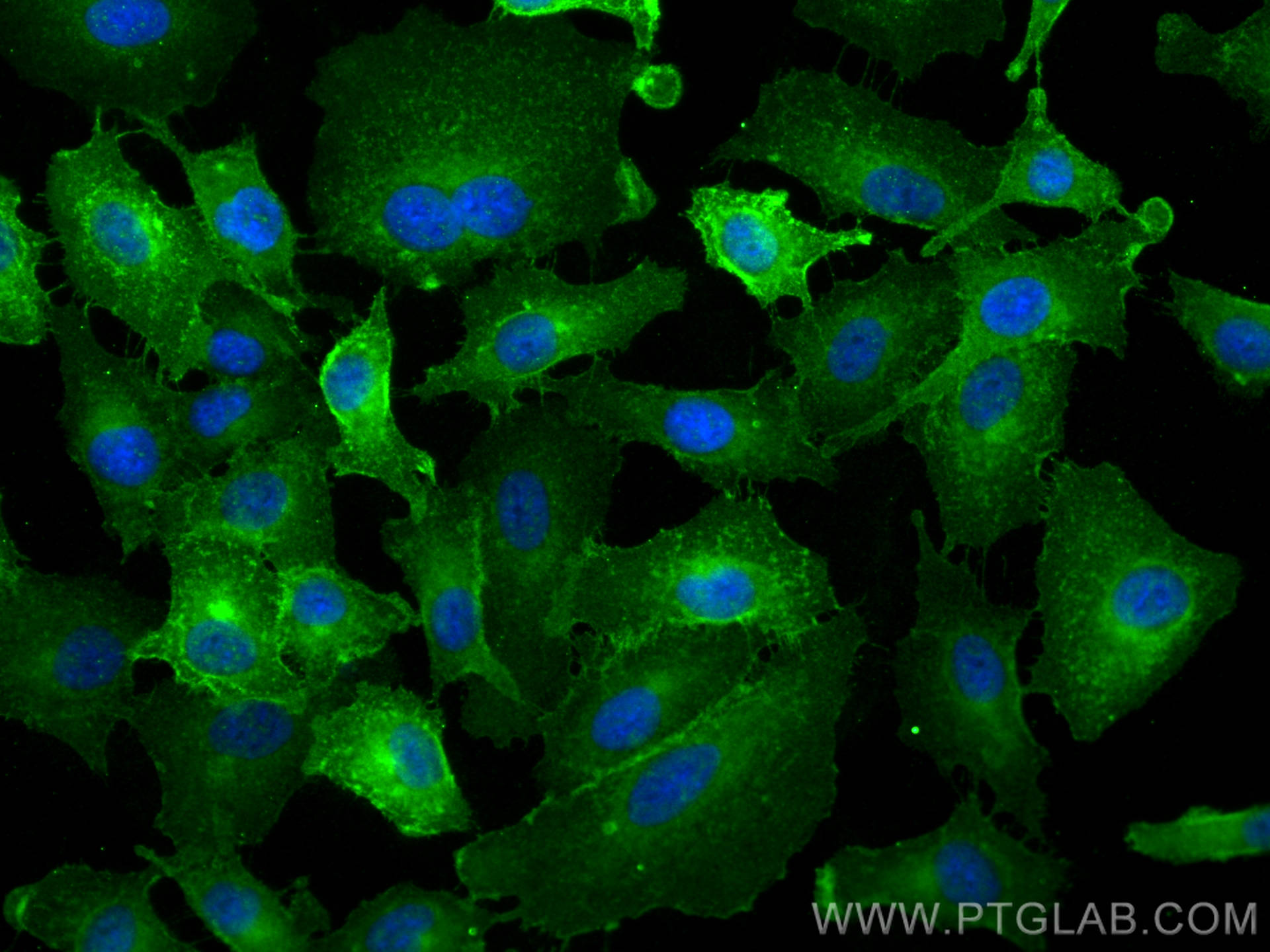Tested Applications
| Positive WB detected in | A549 cells, HeLa cells, MKN-45 cells, human placenta tissue |
| Positive IHC detected in | human placenta tissue, human tonsillitis tissue Note: suggested antigen retrieval with TE buffer pH 9.0; (*) Alternatively, antigen retrieval may be performed with citrate buffer pH 6.0 |
| Positive IF/ICC detected in | A549 cells |
Recommended dilution
| Application | Dilution |
|---|---|
| Western Blot (WB) | WB : 1:5000-1:50000 |
| Immunohistochemistry (IHC) | IHC : 1:4000-1:16000 |
| Immunofluorescence (IF)/ICC | IF/ICC : 1:50-1:500 |
| It is recommended that this reagent should be titrated in each testing system to obtain optimal results. | |
| Sample-dependent, Check data in validation data gallery. | |
Published Applications
| WB | See 7 publications below |
| IHC | See 1 publications below |
| IF | See 4 publications below |
Product Information
26580-1-AP targets CD55 in WB, IHC, IF/ICC, ELISA applications and shows reactivity with human samples.
| Tested Reactivity | human |
| Cited Reactivity | human, mouse, rat |
| Host / Isotype | Rabbit / IgG |
| Class | Polyclonal |
| Type | Antibody |
| Immunogen |
CatNo: Ag25026 Product name: Recombinant human CD55 protein Source: e coli.-derived, PGEX-4T Tag: GST Domain: 35-126 aa of BC001288 Sequence: DCGLPPDVPNAQPALEGRTSFPEDTVITYKCEESFVKIPGEKDSVICLKGSQWSDIEEFCNRSCEVPTRLNSASLKQPYITQNYFPVGTVVE Predict reactive species |
| Full Name | CD55 molecule, decay accelerating factor for complement (Cromer blood group) |
| Calculated Molecular Weight | 41 kDa |
| Observed Molecular Weight | 60-80 kDa |
| GenBank Accession Number | BC001288 |
| Gene Symbol | CD55 |
| Gene ID (NCBI) | 1604 |
| RRID | AB_2880559 |
| Conjugate | Unconjugated |
| Form | Liquid |
| Purification Method | Antigen affinity purification |
| UNIPROT ID | P08174 |
| Storage Buffer | PBS with 0.02% sodium azide and 50% glycerol, pH 7.3. |
| Storage Conditions | Store at -20°C. Stable for one year after shipment. Aliquoting is unnecessary for -20oC storage. 20ul sizes contain 0.1% BSA. |
Background Information
CD55, also known as DAF, is a glycosylphosphatidylinositol (GPI)-anchored surface glycoprotein that is widely distributed on blood, stroma, epithelial, and endothelial cells (PMID: 7517044; 29503741). It can also exist as a soluble form in plasma, urine, saliva, tears, and synovial fluids (PMID: 29503741). CD55 is a complement regulatory protein (PMID: 2469439; 7517044). It inhibits formation of the C3 convertases through binding to C3b and C4b. It also binds the alternate pathway convertase C3bBb, the classical pathway convertase and C4b2a to accelerate their decay (PMID: 17289551). CD55 also serves as a receptor for coxsackieviruses B1, B3, and B5 and several enteroviruses (PMID: 7538177; 7517044). The observed molecular weight of mature CD55 varies between 50 to 100 kDa depending on the cell type. Different sizes of CD55 might be caused by alternative splicing or different glycosylation patterns (PMID: 29503741).
Protocols
| Product Specific Protocols | |
|---|---|
| IF protocol for CD55 antibody 26580-1-AP | Download protocol |
| IHC protocol for CD55 antibody 26580-1-AP | Download protocol |
| WB protocol for CD55 antibody 26580-1-AP | Download protocol |
| Standard Protocols | |
|---|---|
| Click here to view our Standard Protocols |
Publications
| Species | Application | Title |
|---|---|---|
Mol Cancer Cell surface CD55 traffics to the nucleus leading to cisplatin resistance and stemness by inducing PRC2 and H3K27 trimethylation on chromatin in ovarian cancer | ||
Nat Commun Macrophage lineage cells-derived migrasomes activate complement-dependent blood-brain barrier damage in cerebral amyloid angiopathy mouse model | ||
Clin Exp Immunol Therapeutic hyperthermia regulates complement C3 activation and suppresses tumor development through HSPA5/NFκB/CD55 pathway in nasopharyngeal carcinoma | ||
Phytomedicine Total coumarin derivates from Hydrangea paniculata attenuate renal injuries in cationized-BSA induced membranous nephropathy by inhibiting complement activation and interleukin 10-mediated interstitial fibrosis. | ||
J Proteomics Quantitative proteomic analysis of scleras in guinea pig exposed to wavelength defocus. | ||
Exp Ther Med Paeoniflorin-6'O-benzene sulfonate suppresses fibroblast-like synoviocytes proliferation and migration in rheumatoid arthritis through regulating GRK2-Gβγ interaction |

